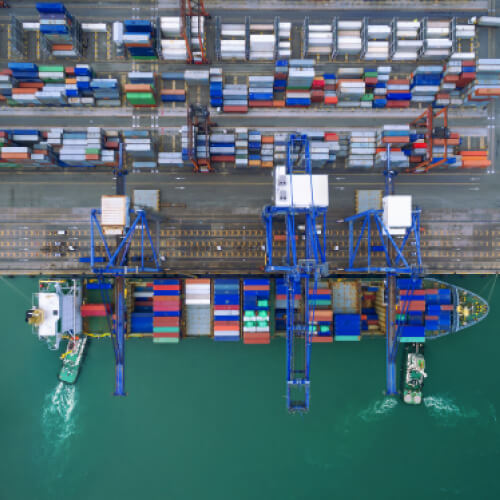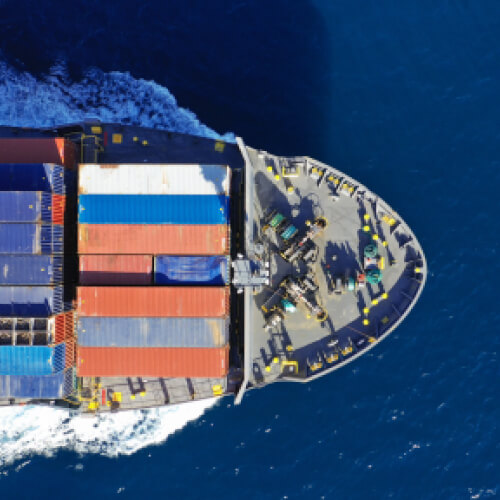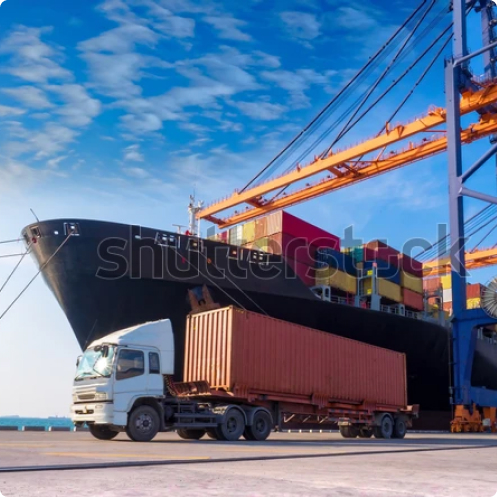Incoterms® (International Commercial Terms) are standardized contractual clauses set by the International Chamber of Commerce (ICC) designed to regulate global trade. They play a crucial role in defining roles and responsibilities between seller and buyer in the contract for the sale and purchase of the goods.
In this article by Savino Del Bene, we will explore in detail what Incoterms® are, their function, and how they are classified, with specific insights into each term.
What is their purpose?
Incoterms® are drafted and published by the International Chamber of Commerce with the primary goal of facilitating global commercial practices by providing a common language that reduces misunderstanding between the parties.
Origins and evolution of Incoterms®
The inception of Incoterms® dates back to 1936 when the ICC (founded in Paris in 1919) recognized the need to standardize delivery terms used in commercial transactions to avoid misunderstandings and confusion due to different contractual clause interpretations in various countries. Since then, Incoterms® have been updated several times to adapt to the evolution of international trade. The present version, Incoterms® 2020, reflects these modern needs and newer trade practices.
The latest version of Incoterms® does not cancel the previous ones. If clearly stated in the contract, the parties, if they wish, could use a term of any previous version (even if the suggestion is to use the latest version).
Main role and functions of Incoterms®
The role of Incoterms® is of fundamental importance in international trade. They serve to:
- Define the allocation of responsibilities: Incoterms® precisely establish which obligations (who must organize carriage, just to give an example), risk (where and when the seller transfers risk to the buyer) and costs (who must pay the unloading costs, just to give an example) are borne by the seller and which by the buyer;
- Simplify communications: by providing standardized language, Incoterms® prevent misunderstandings and incorrect interpretations that can arise from linguistic and legal differences between countries;
- Facilitate contracts: the use of Incoterms® in international sales contracts helps parties clearly define delivery terms, making contract drafting and transaction management more straightforward;
- Optimize logistical processes: clarity on risk transfer and shipping tasks optimizes logistical planning, helping to reduce delays and confusion.
For companies engaged in international trade, understanding and correctly using Incoterms® is crucial for effectively managing the risk and costs associated with shipping goods. A proper choice of Incoterms® rule can not only prevent costly misunderstandings and disputes but also improve commercial relationships, ensuring that all parties have clear and achievable expectations regarding their responsibilities.
How many Incoterms® are there and how are they classified?
The Incoterms® 2020 are made up of 11 rules, each one divided in 10 articles (“A” articles concerning the seller’s obligations, “B” articles concerning the buyer’s obligations) grouped into two categories:
- Rules for any mode or modes of transport (Ex Works, Free Carrier, Carriage Paid To, Carriage and Insurance Paid To, Delivered at Place, Delivered at Place Unloaded, Delivered Duty Paid);
- Rules for sea and inland waterway transport (Free Alongside Ship, Free on Board, Cost and Freight, Cost Insurance and Freight).
Each term has a corresponding three-letter acronym:
- Ex Works – EXW
- Free Carrier – FCA
- Carriage Paid To – CPT
- Carriage and Insurance Paid To – CIP
- Delivered at Place – DAP
- Delivered at Place Unloaded – DPU
- Delivered Duty Paid – DDP
- Free Alongside Ship – FAS
- Free On Board – FOB
- Cost and Freight – CFR
- Cost Insurance and Freight – CIF
The Incoterms® rules can also be divided in other ways; a way is by groups divided by the initial letter (E, F, C, and D):
- Group E: the seller delivers the goods before the transport cycle starts. From that moment on, the buyer takes on all the costs and risk.
- Group F: the seller delivers the goods before the main carriage that is paid by the buyer.
- Group C: the seller contracts and pays for the transport to bring the goods to the destination place or port of destination but the delivery happens before (as soon as the goods are handed over to the carrier or on board the vessel at the port of loading).
- Group D: the seller assumes the costs of the carriage and risk until the goods are delivered to the final destination.
It’s very important understand the importance of delivery that, for all Incoterms®, represents the passage of risk of loss of or damage to the goods from the seller to the buyer. The place of delivery should not be confused with the place of destination (only in Group D these two places match).

What are the Incoterms®?
After an overview of the four groups, let’s analyze the 11 Incoterms® more closely.
Incoterms® Group E: EXW
This group includes only EXW (Ex Works): with this term, the seller delivers the goods by placing them at the disposal of the buyer at a named place (seller’s premises or another agreed place like a factory or warehouse).
This term represents the option that places the least responsibility on the seller. It’s the only case in which there is not the obligation for the seller to carry out and pay for export clearance.
Incoterms® Group F: FCA, FAS, and FOB
Group F includes three terms:
- FCA (Free Carrier): the seller delivers the goods in one or other two ways: when the goods are loaded on the means of transport arranged by the buyer (if the named place is the seller’s premises) or when the goods, once loaded on the seller’s means of transport, reach the named place ready for unloading at the disposal of the carrier named by the buyer (if the named place is another than the seller’s premises);
- FAS (Free Alongside Ship): The seller delivers the goods by placing them alongside the ship (e.g. on a quay or a barge) at the named port of loading. The ship is nominated by the buyer;
- FOB (Free On Board): The seller delivers the goods on board the vessel at the named port of loading. The vessel is nominated by the buyer.
Incoterms Group C: CPT, CIP, CFR and CIF
Group C includes four terms:
- CPT (Carriage Paid To): the seller delivers the goods by handing them over to the carrier. The carrier is contracted by the seller, that pays the transport up to the place of destination but the risk transfers to the buyer with the above mentioned delivery (before the main transport starts). In case of multiple carriers, in the absence of an agreement between the parties in the contract, delivery happens with the first carrier;
- CIP (Carriage and Insurance Paid To): same features of CPT, in addition the seller must obtain, at its own cost, a cargo insurance against the buyer’s risk of loss of or damage to the goods in compliance with the cover provided by Clauses A of the Institute Cargo Clauses (extensive cover) or any similar clauses;
- CFR (Cost and Freight): the seller delivers the goods on board the vessel at the port of loading. The seller must contract for the carriage to the port of destination but the risk transfers to the buyer with the above mentioned delivery (before the main transport starts). In case of multiple carriers, in the absence of an agreement between the parties in the contract, delivery happens with the first carrier;
- CIF (Cost Insurance and Freight): same features of CFR, in addition the seller must obtain, at its own cost, a cargo insurance against the buyer’s risk of loss of or damage to the goods in compliance with the cover provided by Clauses C of the Institute Cargo Clauses (minimum cover) or any similar clauses.
Incoterms Group D: DAP, DPU, and DDP
Group D includes three terms:
- DAP (Delivered At Place): the seller delivers the goods at the named place of destination by placing them at the disposal of the buyer on the arriving means of transport ready for unloading;
- DPU (Delivered at Place Unloaded): the seller delivers the goods at the named place of destination once unloaded from the arriving means of transport. It’s the only term that requires the seller to take care of unloading of the goods;
- DDP (Delivered Duty Paid): the seller delivers the goods at the named place of destination by placing them, already cleared for import, at the disposal of the buyer on the arriving means of transport ready for unloading. This term represents the maximum commitment for the seller. It’s the only case in which the seller must carry out and pay for import clearance.
For a complete summary, please refer to the Incoterms® table by Savino Del Bene.
Conclusion
In conclusion, Incoterms® are very important tools that help international commerce, ensuring clarity in shipping industry. As an international freight forwarder, Savino Del Bene is here to assist all those companies needing support for the correct interpretation and application of these terms. Our goal, through our international shipping services, is to ensure that every business’s goods can travel safely and in compliance with regulations. Contact us now for a tailored consultation for your needs.






